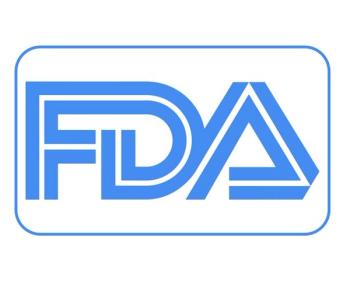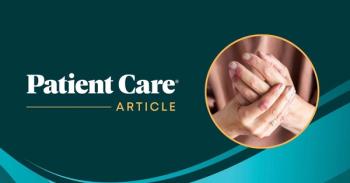
Maternal Blood Test Diagnoses Down's Syndrome
COLUMBIA, Md., Feb. 2 -- A blood test for pregnant women may be able to diagnose trisomy 21, which leads to Down's syndrome, and other chromosomal abnormalities in the fetus, according to a preliminary study.
COLUMBIA, Md., Feb. 1 -- A blood test for pregnant women may be able to diagnose trisomy 21, which leads to Down's syndrome, and other chromosomal abnormalities in the fetus, according to a preliminary study.
The new test yielded a false positive rate under 2% for trisomy 21 with a detection rate of 66%, said Ravinder Dhallan, M.D., of Ravgen Inc., here, and colleagues. Their company-sponsored, preliminary study of 60 pregnant women was published online in the Feb. 3 issue of The Lancet.
While only eight of the maternal blood samples were drawn during the first trimester of pregnancy, all accurately identified a fetus as normal or abnormal. In all there were 60 tests, with one false positive and one false negative. There were two accurately diagnosed Down's fetuses.
The earliest a test was done was eight weeks and one day. The median was 17 weeks and five days. The earliest a trisomy 21 was found at 19 weeks and two days. Another was found after testing at 20 weeks and one day.
The investigators noted that the tests were performed in "the appropriate patient population." The median age of the mothers was 34.
The test used the small amounts of fetal DNA that cross the placenta and circulate in the mother's blood plasma. The researchers discovered a way to distinguish maternal from fetal free DNA by measuring the ratio of alleles at the site of single nucleotide polymorphisms on different chromosomes.
Current screening tests for Down's syndrome, such as such as amniocentesis and chorionic villus sampling, have a small but real risk of miscarriage. Amniocentesis is generally done at 15 to 18 weeks. Chorionic villus sampling (CVS) is done at 10 to 12 weeks.
"Development of non-invasive tests that yield diagnostic results would be a useful advancement in prenatal care," Dr. Dhallan and colleagues said. "Venipunctures are done routinely in clinical settings and present little risk to the mother and fetus."
Their results are promising and open a new era in prenatal diagnosis though they need to be replicated in a larger trial, according to an editorial by Alexandra Benachi, M.D., of the Universit Paris-Descartes in Paris, and Jean-Marc Costa, Ph.D., of the Hpital Amricain de Paris in Neuilly, France.
Compared with amniocentesis or newborn reports from the clinical sites, the blood test results were accurate for 58 of 60 samples, including two correctly identified cases of trisomy 21. However, there was one false positive and one false negative.
Therefore, preliminary accuracy of the test was:
- 66.7% sensitivity and positive predictive value (95% confidence interval 12.5 to 98.2).
- 982% specificity and negative predictive value (95% CI 89.4 to 99.9).
Screening tests for Down's syndrome have a 5% false positive rate and a 64% to 96% positive predictive value. Invasive diagnostic tests are regarded to be 99% accurate.
However, both the authors and the editorialists cautioned that the preliminary results should not yet be compared with available tests.
"Although the sensitivity and specificity of the SNPs tests can compare favourably?these studies are preliminary and have been done on very few patients," Drs. Benachi and Costa wrote.
The researchers collected blood samples from 60 pregnant women and the stated biological fathers. Paternal samples were for reference purposes. Maternal samples, which contained a mean of 34.0% free fetal DNA, were analyzed using standard molecular biology equipment.
Because the distinguishing feature of trisomy 21 is inheriting three copies of chromosome 21 rather than the usual pair (one from the mother and one from the father), the researchers looked for the number of copies of chromosome 21 and used the number of copies of chromosome 13 as a reference.
The investigators analyzed hundreds of SNP segments for each chromosome in each blood sample and quantified only the two dozen or so that had unique fetal allele signal (i.e. mother homozygous for guanine, G/G, versus fetus heterozygous for guanine and thymine, G/T).
Overall, SNPs on a normal pair of chromosomes should have a ratio of unique fetal allele signal to the combined maternal and fetal allele signal approaching 1:3 (i.e. a total of one T and three G).
The signal ratio is significantly lower when trisomy occurs at about 1:4 (i.e. the sum of G/G from the mother and G/G/T from the fetus).
When the signal ratio from chromosome 21 was significantly lower than that from chromosome 13, Dr. Dhallan and colleagues diagnosed it as a case of trisomy 21.
The researchers said the accuracy of the test is likely to increase with further refinements to their method, such as quantifying more SNPs and increasing the number of reference chromosomes
Again, though, Drs. Benachi and Costa cautioned that "further testing in this stage of pregnancy will be essential."
The American College of Obstetricians and Gynecologists recommends that all pregnant women, irrespective of age, be offered the option of genetic screening.
Newsletter
Enhance your clinical practice with the Patient Care newsletter, offering the latest evidence-based guidelines, diagnostic insights, and treatment strategies for primary care physicians.



















































































































































































































































































